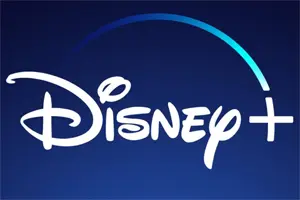Disney+'s content war with Netflix is changing TV forever, leaving little room for risk-taking
-

"As recently as a decade ago, television was not a thing you streamed, but the stream—the live feed, the prime-time programming, the newest content," says Sonia Saraiya. "TV was not just the show, but the commercial breaks that interrupted it, the news that preceded it, and the machine itself too. Netflix punched a hole in that idea of television—first, turning the stream into an ocean of content, and second, letting you, the viewer, choose what you wanted to fish out of that ocean at any given time. Now a half dozen other services want to offer you that same power, but the oceans of content are all different, and you have to pay a different fee for each one. Classic TV, once a niche hobby for certain obsessives, is now a cultish pop-culture curiosity for a generation of teenagers." For the past 20 years, the Peak TV era has led to innovative shows like The Wire, Mad Men and BoJack Horseman. The Peak TV era, says Saraiya, has been "telling us about the criminal-justice system, reframing our history, and changing the conversation about transgender rights. Stories on television have bent time, cheated death, and challenged the devil—often filmed and produced by some of the top talent in the industry, film or TV. The expansion in television since the era of Friends has made it possible for TV to become, in the words of New York writer Adam Sternbergh, an 'artistic refuge' for directors like Steven Soderbergh. As a result of this creative burgeoning, the last decade of Peak TV has been an enormous playground for established talent—and a proving ground for up-and-coming talent. Oceans of content might make it possible for programmers to experiment more with what’s on their platforms. But the competition between streamers, as with movie studios at the box office, leaves little room for risk. Netflix, which built its brand on rescuing troublesome, fan-favorite shows that conventional networks had abandoned, has been contracting in anticipation of Disney+’s debut—canceling adventurous, niche shows, including One Day at a Time, Tuca & Bertie, Chambers, and The OA, even as it found the hundreds of millions necessary for The Office. There’s still interest in funding shows that try to do something bigger and better—shows that, to use (Martin) Scorsese’s language, take creatively rewarding risks. On the one hand, the strategy for most of the megacorporations in the streaming game is volume, which makes studios desperate to greenlight, apparently, anything. But when megacorporations compete, risks tend to vanish." Soraiya adds: "The strategy of content as adding to a streaming platform’s volume does two things: It encourages TV creators to make more content at a rate that guarantees mediocrity, and it encourages TV viewers to watch less carefully, more shallowly, and certainly much more quickly. In the past I’d watch and rewatch a beloved series until I had it memorized. Now Netflix is considering unveiling an option to view at 1.5 times the speed, ensuring I blitz through it as fast as I can get my eyes to process the information. Volume, as a content strategy, is not about spending one’s time well. It’s about filling up an emptiness with something; it’s about taking up space. It’s about offering something that is just enough of an alternative to boredom that it’s worth pressing play."
TOPICS: Disney+, Netflix, Disney, Peak TV
More Disney+ on Primetimer:- How to watch The Beatles Anthology online? Streaming options explained
- Avatar: The Way of Water recap: All to know before Avatar: Fire and Ash releases
- What time will Taylor Swift: The End of an Era docuseries release on Disney+? Global release timings explored
- What’s behind the tribute to Danny Virtue in Percy Jackson and the Olympians season 2 episode 2? Explained
